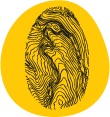
Land-use and distribution of amphibians in the Alta Murgia national park
Traditionally, analyses of relationships between amphibians and habitat focused on breeding environments (i.e., pond features) more than on the features of the surrounding environment. Nevertheless, for most amphibians the terrestrial phase is longer than the aquatic phase. In the last decade studies are increasingly stressing importance of analyses performed at the landscape scale: the terrestrial habitats are necessary for the post-reproductive life of amphibians, and can also influence the features of aquatic breeding wetlands.
However, measuring the features of terrestrial habitats may be challenging. To date, most of studies focus on land use/land cover categories. Recent approaches that can be obtained from remote sensing, such as general habitat categories (GHC) can provide an alternative approach to the assessment of terrestrial habitats in amphibias.
The aim of this analysis was evaluating the importance of landscape features for amphibians within the Alta Murgia National Park, and to assess whether GHC provide better habitat measures, compared to standard land use.
Five amphibians were detected in the 63 ponds: the Italian newt Lissotriton italicus (occurrence = 13 sites); the Italian crested newt Triturus carnifex (occurrence = 2 sites); the green toad Bufo viridis (occurrence = 14 sites); the common toad Bufo bufo (occurrence = 9 sites); the pool frogs Phelophylax synklepton hispanicus (occurrence = 32 sites). Analyses were performed on the three commonest species: Italian newt, green toad and pool frogs.
For all the species analyzed, the presence / absence in breeding wetlands was significantly related to parameters describing habitats, confirming that the surrounding landscape is extremely important for the distribution of aquatic breeding amphibians. We used an information-theoretic approach to assess whether the GHC maps allow to improve the performance of species distribution models, compared to land-use categories. On the basis of AICc weight, the support of the GHC models was 1.4 times higher than the support of the UDS models. These analyses suggest that GHC provide a better description of the terrestrial habitat, compared with the traditional land use maps. The expansion of coverage by GHC will certainly allow to perform more accurate comparisons of the performance of models, and to obtain better models describing species distribution that can be used for the management of the park.
